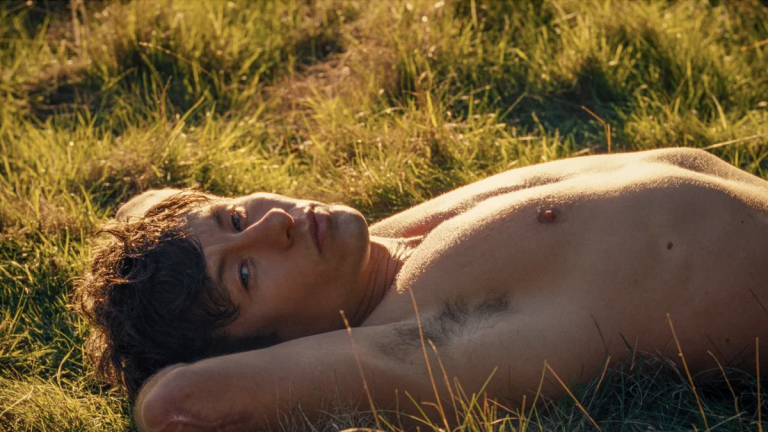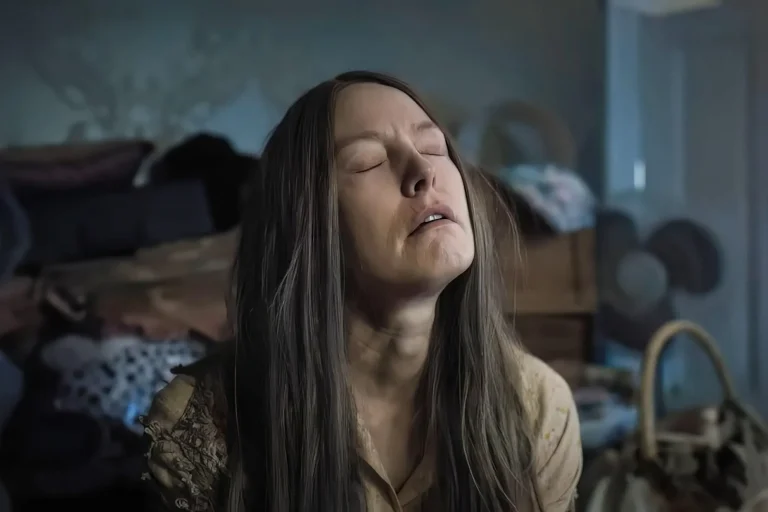If a tree falls in the forest and nobody is around to make a movie about it, does it make a sound?
Robert Grainier is a logger with more questions than answers. He wonders aloud to his wife whether their baby daughter, Kate, knows he is her father. “Deep down she knows it,” Gladys replies, “even if she doesn’t know it yet.” This assurance captures the defining insight of Clint Bentley’s “Train Dreams,” which centers on a man obscured by interiority and clarified through narration. Grainier’s is a journey toward acceptance of what, deep down, he already knows.
Based on the 2002 novella by Denis Johnson, “Train Dreams” provides its first glimpse of Grainier as an orphan child riding a railcar. Will Patton’s voiceover, unbroken through a decade-jumping flashforward, characterizes a content, unassuming man. His seasonal job clearing forests for railroad construction is taxing, but Grainier, played by Joel Edgerton, appreciates the camaraderie of his fellow laborers. That earnest outlook is shattered by a harrowing opening-act scene in which he first confronts death. When a Chinese man working beside him is seized without warning, Grainier reflexively protests but can do nothing to help. He is left to watch the man struggle and plead, only to be thrown callously off a nearby bridge.
Grainier’s shyness forces Gladys, played by Felicity Jones, to facilitate conversation during their chance meeting. Their love is his animating spirit from that point forward. The couple makes an idyllic family life in a remote cabin on a picturesque plot of land — bliss interrupted only by Grainier’s long stretches away at work in the woods. He returns from one such absence to the sheer panic of a massive wildfire sweeping through town. Racing desperately through the inferno, he cries out for Gladys and Kate. Instead, Grainier finds their home reduced to ash. The film goes on to examine the cost of all this devastation.
Bentley places a psychological filter over a period piece. In the early industrial Pacific Northwest, Freudian attempts to unearth the root of trauma are as necessary as an axe in the age of the chainsaw. The sources of mental anguish are tangible: a companion inexplicably murdered, a wife and daughter lost in titanic flames. And then, the requisite suffering: dismay, loneliness. The effect is as predictable as it is inescapable — soft-science psychology congealed into hardened physics. Blade swings, wood splits.

The modern viewer is made to endure the quiet of Grainier’s world on a fractional scale. It’s a world almost totally foreign to us; one in which only the harmonica from a neighboring tent can drown out our thoughts. How excruciating those thoughts must be — left so thoroughly uninterrupted — and how sweet, the simple, momentary relief. Alone in nature, Grainier’s thinking is permitted to take nothing more or less than its natural course. There, tragedy lands like felled timber, registering an impact proportional to its weight. It echoes.
Dreams are Grainier’s release valve when expression eludes him. Mounting emotional pressure escapes in a subconscious plume like steam from a locomotive. It frequently takes the shape of haunting reminders. He sees Gladys, Kate, and the man he couldn’t save. Eventually, he becomes unable to distinguish between reality and the visible yet untouchable exhaust of his mind. The unrelenting torment leads an increasingly bewildered Grainier to question whether he’s earned this fate.
As Grainier reckons with the toll of his losses, he encounters people who invariably possess more certainty. Each passing aphorism builds a slow chug of momentum along a healing track. Arn, a technician weathered by decades of work, answers Grainier’s doubt: “I’ve seen bad men raised up and good men brought to their knees.” We watch the stoic listen and wonder how he digests the words. The film’s supporting characters don’t claim to have lived charmed lives. Rather, they articulate how they’ve made peace with their suffering.
When Grainier finally addresses his interior world, it’s merely in the form of an acknowledgement. “Sometimes it feels as though the sadness can eat you alive,” he confides in a friend. It isn’t a revelation so much as a verbal surrender. Yet the simple statement seems to propel him forward. He stops resisting, and his life resumes motion. Grainier knows that he can’t change the past. He also knows that the passage of time won’t change the answers to his most pressing questions, some of which he’ll never know. But time has its own gravity. Its gradual pull is toward acceptance of a fractured reality — the essence of grief.
The film’s epilogue sees Grainier navigate the unfamiliar terrain of a city in his old age. He explores novel surroundings paralleled by the newly lifted confines of his mind, and enjoys the fruits of industrialization for which he paid dearly. Ironically, it’s in an aircraft where Patton says Grainier feels “connected”, the elevated perspective allowing him to see the world he’s inhabited with more clarity, if not certainty. “Train Dreams” is a portrait of unadulterated human response. It makes clear the forces we can control, and those we can’t.
If grief devastates a man and he cannot fully voice it, is it any less real? “Train Dreams” answers the epistemological question at its core with authority.
Regardless of our willingness to acknowledge grief, we grieve.






